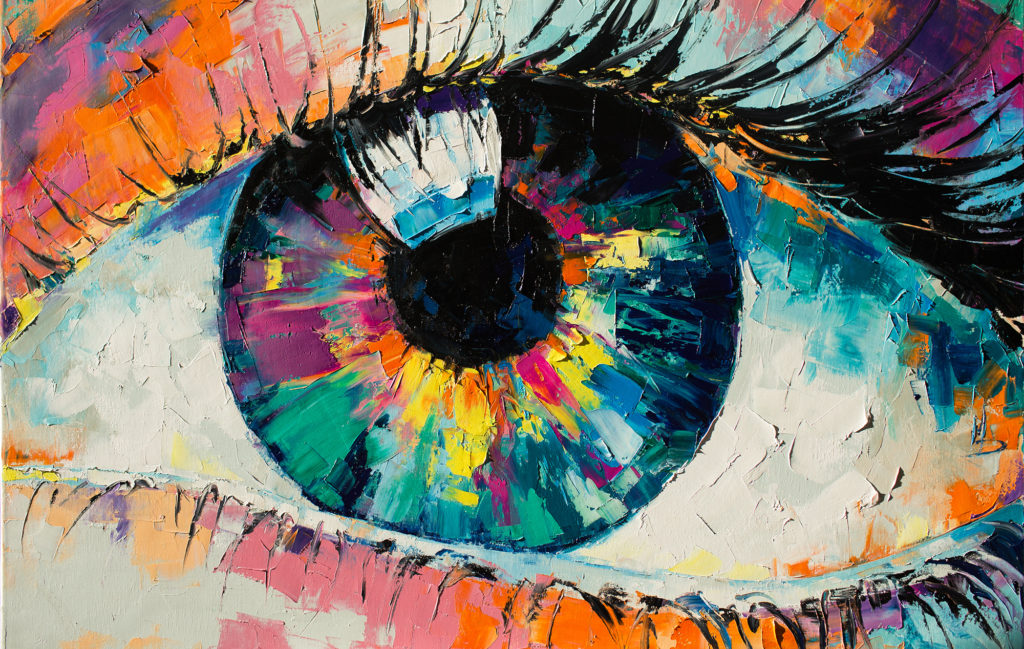Examining the Social Effect of Trump Art on Modern Artistic Motions
Examining the Social Effect of Trump Art on Modern Artistic Motions
Blog Article
Diving Into the Diverse Globe of Artistic Expression: From Surrealism to Abstract Realism
In the world of artistic expression, from the dreamlike landscapes of surrealism to the detailed play of light and kind in abstract realism, musicians have continually pressed the limits of creativity and imagination. Each movement holds a distinct lens where the globe is watched and analyzed, using a glimpse right into the midsts of human emotion, assumption, and assumed. As we check out the complex globe of art, we exist with a tapestry of designs, techniques, and ideologies that challenge our understanding and provoke consideration. The journey with these diverse forms of imaginative expression assures to decipher an abundant tapestry of visual narration and intellectual inquiry that astounds the mind and stirs the heart.
Surrealism: Unleashing the Subconscious
Surrealism, an avant-garde imaginative movement of the 20th century, looked into the midsts of the subconscious, revealing a globe of dream-like images and non-traditional juxtapositions. Led by musicians like Salvador Dali, René Magritte, and Joan Miró, Surrealism looked for to test the conventional ways of understanding and seeing art. Through strategies such as automatism and desire evaluation, Surrealist musicians aimed to take advantage of the unconscious mind to reveal surprise realities and wishes.
One of the vital aspects of Surrealism was the emphasis on the unreasonable and the astonishing. By incorporating unforeseen aspects in their works, Surrealist musicians aimed to produce a sense of disorientation and shock in the audience. This disruption of logic and factor was suggested to prompt a much deeper exploration of the subconscious and the mysteries of the human psyche.
Abstract Realistic Look: Redefining Assumption
Testing standard creative boundaries, Abstract Realistic look redefines understanding with the fusion of recognizable components with abstract types. This ingenious approach to art incorporates the representational precision of realism with the imaginative flexibility of abstraction, providing customers a special visual experience that motivates them to question their perception of fact.
In Abstract Realism, musicians aim to capture the essence of their subjects while likewise infusing their job with a sense of deepness and complexity via abstract aspects. By blending the acquainted with the unfamiliar, these musicians invite target markets to engage with their items on multiple degrees, encouraging them to discover the nuances of appearance, kind, and color.

Cubism: Fragmentizing Reality
Utilizing fragmented point of views and geometric types, Cubism revolutionized the artistic representation of fact in the early 20th century. This technique not only deconstructed reality but also stressed the monotony of the canvas, paving the method for future abstract art motions.

Cubism can be categorized into two main phases: Analytical Cubism, characterized by monochromatic color design and elaborate, fragmented types; and Synthetic Cubism, which incorporated collage elements and brighter colors into the compositions. Via these distinctive stages, Cubism affected not only paint however likewise sculpture, design, and style. trump art. Its effect reverberated across the art globe, motivating musicians to check out new ways of interpreting and standing for the globe around them
Expressionism: Feelings on Canvas
Discovering the depths of human emotions via expressive and vibrant brushstrokes, Expressionism emerged as an extensive creative movement in the very early 20th century. Unlike previous art motions that focused on showing the outside world, Expressionism looked into the inner realm of the artist's mind, aiming to evoke raw feelings and prompt natural actions from viewers.
Expressionist musicians, such as Edvard Munch, Egon Schiele, and Emil Nolde, rejected typical notions of appeal and realism for distorting type and shade to communicate subjective sensations. Making use of overstated brushwork, strong shades, and distorted numbers aided create a feeling of unease, alienation, or enthusiasm in their jobs.
Among the most popular instances of Expressionism is Munch's "The Scream," which captures the extreme anxiety and anguish of modern-day life through its swirling, distorted number against a blood-red sky. With their psychologically charged jobs, Expressionist artists sought to challenge standard artistic norms and supply a home window right into the rough midsts of the human heart.
Contemporary Art: Evolving Point Of Views

Among the specifying attributes of modern art is its constant advancement and ability to adapt to altering go to this website social landscapes. Artists are progressively integrating modern technology right into their technique, blurring the lines between the digital and physical realms. This combination of mediums enables for cutting-edge methods of storytelling and engaging with target markets in a much more interactive way.
Furthermore, contemporary art often functions as a system for social discourse, resolving pushing concerns such as identity, national politics, and the environment. Artists are using their work to spark important conversations and prompt idea, dropping light on the complexities of the world we live in. As perspectives continue to evolve, contemporary art continues to be a prominent and dynamic force in shaping our social landscape.
Verdict
In final thought, the world of artistic expression encompasses a large range of movements and designs, each with its very own distinct method to conveying meaning and emotion. From surrealism's expedition of the subconscious to abstract realistic look's redefining of understanding, and from cubism's fragmentation of reality to expressionism's portrayal of feelings, art proceeds to progress and review challenge perspectives - trump art. Contemporary art mirrors the ever-changing globe we stay in, offering brand-new ways to interpret and understand the intricacies of our fact
As we check out the diverse globe of art, we are presented with a tapestry of designs, methods, and viewpoints that challenge our understanding and prompt contemplation. Its influence reverberated throughout the art globe, inspiring musicians to explore new means of representing the world and analyzing around them.

Report this page